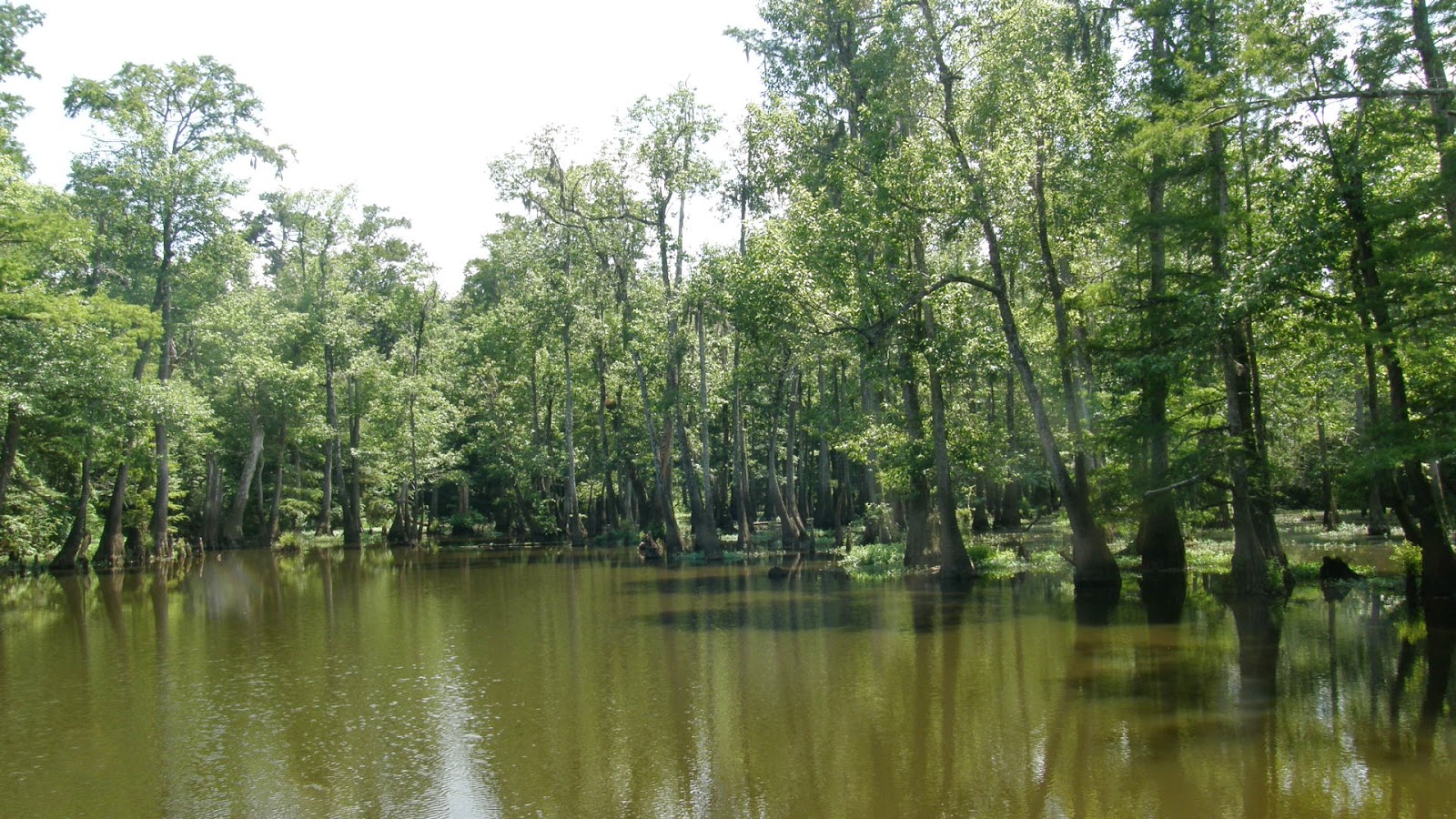IBWOH's: Richard Ezell, Christopher Carlisle
Summary: A day-long scouting trip of the upper Pascagoula River WMA, focusing on the Red Swamp, where Red Creek flows into Black Creek, before Black Creek reaches the Pascagoula. An initial foray into the nearby Whiskey Hills, at the southeastern corner of the DeSoto National Forest, did not yield any terrain of interest, though there were some nice red oaks and magnolias among the stands of young pine. Much of the morning was spent attempting to access the Pascagoula WMA south of Benndale on the west bank; however, we soon found that access was severely restricted by private property. We finally found a WMA road that led directly to Black Creek, some miles above where it joins with the Red. We set off downstream immediately; and, although we did not find the confluece of Red and Black Creeks as I had hoped, we passed through some very nice swampland. None of the mixed bottomland that I saw was particularly old, probably second-growth at best; but we believe it worthy of greater exploration, albeit from a different direction.
After lunch in Lucedale, we headed back southward, this time along the east bank of the Pascagoula. There access was much less restricted, and we were delighted and intrigued by the magnificent swamps and bayous that greeted us along the banks of this mighty river.
I can not identify this small tree near the boat ramp, growing over Black Creek.
EDIT: Buttonbush, Cephalanthus occidentalis. Thanks, Mark!
Black Creek, looking upstream.
Red Swamp, immediately off the WMA road.
The water was fairly shallow.
Much of the swamp has already dried out, allowing us easy passage. There were virtually no biting insects, and we saw only a black snake.
Richard unwisely left his camera at home, forcing him to attempt shots with his camera phone. The Yellow-crowned Night Heron we found here was most accommodating, however.
A beautifully eerie stream cut through the dry swamp bed. The water was cool, and clear as a bell.
We did not investigate its source.
Dead cypress near the swamp stream.
A hollow giant.
At fifteen and a half feet in circumference, he was by far the biggest tree we found in Red Swamp.
One of the few woodpecker cavities we saw.
Richard estimated the entrance to be three inches wide by four inches long.
I studied this cavity for a long time before moving on.
After working through some very difficult terrain, we eventually found an old fishing camp, and came out again upon Black Creek.
Richard in his element.
Dry swampland back near the truck. I saw my first ever white ibis here, a white specter in the gloom.
Richard spotted this tung oil tree as he drove us down a road. Tung oil was until recently an economically important species here.
A beautiful slough near a park on the west bank of the Pascagoula.
Across the Pascagoula River on Highway 26, then south, we found ready access to the Pascagoula WMA, and this simply lovely oxbow.
White ibis. Second one of the day, second one of my life.
'Sup.
Pascagoula River at Josephine Sand Bar/Sandy Wash Bend. Swallow-tailed kites, Mississippi kites, a snowy egret, and a couple of families swimming. An artesian well gushed nearby, one of several we found in this area.
Conclusions: (1) Access to Red Swamp, Black Swamp, and most of the upper and middle Pascagoula is likely best achieved from the east bank. (2) A benefit of summer searches for IBWO is the drying up of swamps that would otherwise require kayaks. Such areas are relatively free of underbrush, and allow for quiet passage. But to reach such areas often requires crossing deep water; thus:
(3) We are going to need kayaks.






























No comments:
Post a Comment